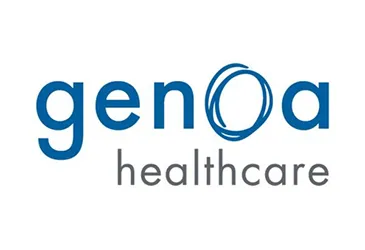PQA, the Pharmacy Quality Alliance, launched an initiative in 2019 to develop a standardized set of pharmacy performance measures. Our work is in response to calls from our member organizations, including NACDS (the National Association of Chain Drug Stores) and NCPA (National Community Pharmacists Association), as well as language in proposed rules issued by the Centers for Medicare and Medicaid Services (CMS). The goal is to deliver a set of pharmacy performance measures that meet standard criteria (importance, feasibility, scientific acceptability, usability), thereby making them appropriate for use in quality programs and value-based arrangements between health plans and pharmacies.
Why pharmacy measures are unique and challenging

Micah Cost
Pharmacy measures are distinct from traditional health plan quality measures and present several challenges related to novel measure development. First, unlike traditional health plan measures that rely on prescription claims for calculation, pharmacy measures require unique data sources outside of the traditional claims-based construct. Further, the non-claims data necessary to develop pharmacy measures is not uniformly captured across all pharmacy technology platforms.
Second, as opposed to health plan measures that establish attribution based on enrollment, the attribution model for pharmacy measures requires verification of a patient-pharmacy relationship. It is important to note that incorporating a pharmacy attribution model is a novel approach to measure development and is not well defined.
Third, unlike health plan measures, which have a defined intended use in existing quality programs such as Medicare Part D Star Ratings, HEDIS, or the Medicaid Adult Core Set, currently there is no quality program whereby these pharmacy measures will be implemented. While a quality program for pharmacy has been referenced in past proposed rules, no such program exists today; yet PQA continues our work to develop pharmacy performance measures to support a pharmacy quality program if one is established in the future.
There is also growing interest in the use of these pharmacy measures in value-based arrangements to drive improvements in patient care. PQA is actively supporting these efforts through the implementation of several pharmacy measure concept pilots, as described below.
Finally, unlike health plan measures that capture large patient populations, pharmacy measures have a much smaller denominator (i.e., the number of eligible patients at an individual pharmacy), which can limit the reliability of the measures, and in some cases the pharmacy doesn’t have enough eligible patients to meet the established minimum denominator). If the minimum denominator of patients is not met, the measure results do not distinguish true differences in performance and will not lead to sound conclusions about the quality of care provided.
Where we’re at today
There are several important pharmacy measure development and implementation initiatives under way.
PQA will soon launch a pilot program for immunization-related pharmacy quality measure concepts, with a specific focus on adult immunization assessment and gap closure. PQA will solicit interest in participation in this pilot from plans and pharmacies through a competitive request for information (RFI) by the end of the third quarter of 2023. Through this initiative, PQA aims to evaluate the effectiveness of pharmacies to improve vaccination rates, gain real-world implementation knowledge on pharmacy quality measures and pharmacy-payer data exchange, and to identify and disseminate best practices for pharmacy immunization quality measurement.
This pilot is similar to a series of active pilots, where the PQA team is working with several member organizations to pilot novel pharmacy measure concepts related to improvement and control of A1c and blood pressure. Supported in part by the Community Pharmacy Foundation and Kroger Health, these pilots deliver real-world data and measure concept testing to support the quality of pharmacist-provided care. As pharmacists take on more direct roles in improving the quality of care in diabetes and hypertension, these intermediate measures support potential future pharmacy quality programs as well as supplement value-based arrangements between plans and pharmacies.
These measure concepts in development are evidence-based and focused on pharmacy performance on patient health outcomes.
Additionally, PQA launched in June a Technical Expert Panel (TEP) focused on Specialty Pharmacy Prescription Abandonment Rate. This TEP will inform a measure concept to assess the percentage of new prescriptions received by a specialty pharmacy that are not obtained by the patient within the measure’s specified time frame, with a long-term goal of launching a pilot program focused on testing a Specialty Pharmacy Prescription Abandonment Rate measure for real-world feasibility in the future.
These concepts in development, if successful, will expand PQA’s set of standardized pharmacy measures.
Previously, in December 2021, PQA members endorsed the Proportion of Days Covered (PDC) Composite pharmacy measure, which is aligned with our health plan adherence measures used in the Medicare Part D Star Ratings. This PDC Composite measure provides one rate that is inclusive of the component PDC measures for diabetes, hypertension and cholesterol and addresses some of the more notable challenges related to pharmacy performance relative to PQA’s three health plan PDC adherence measures. PQA members also endorsed in December 2021 the Specialty Pharmacy Turnaround Time measure, which provides the specialty pharmacy industry a more uniform and standardized quality measure to evaluate turnaround time for prescriptions. PQA is currently conducting an implementation pilot for this measure in partnership with a variety of different specialty pharmacies to learn more about its current and future use in the marketplace.
Where we’re headed
PQA continues to work on high-impact, feasible and appropriate pharmacy performance measure concepts.
The measures developed and endorsed to date plus the measure concepts in development form a strong set of standard pharmacy performance measures that would be appropriate for pharmacy accountability. From medication adherence to specialty pharmacy to clinical and patient-focused services, these measures, used as appropriate based on a pharmacy’s services and the population it cares for, can accurately evaluate their contributions to care.
With any new endeavor, there are enormous challenges and barriers to success, and this is particularly true for the development of pharmacy quality measures. However, PQA continues to forge ahead and remains committed to working alongside our members and stakeholders to see this effort through to completion.
We are eager for pharmacies and health plans to implement the measures that have been endorsed and to help us test for feasibility and usability the measure concepts now advancing through our multi-stakeholder, consensus-based measure development process.
Micah Cost is chief executive officer of the Pharmacy Quality Alliance.









